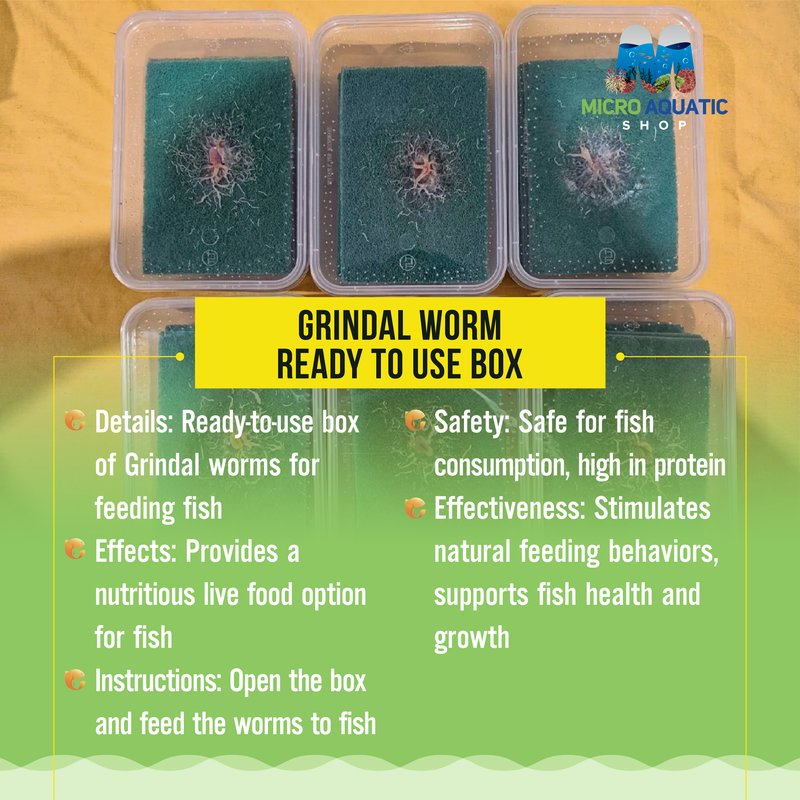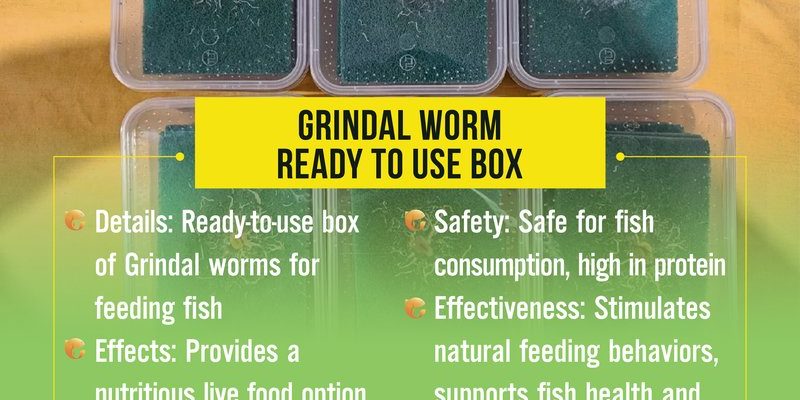
Grindal worms, scientifically known as *Enchytraeus buchholzi*, are small, white worms often used as fish food and a nutrient-rich addition to soil. They thrive in moist environments, making them a favorite among aquarium enthusiasts and gardeners alike. Here’s the thing: not only do they enrich the soil with essential nutrients, but they also serve as a food source for fish and other aquatic animals. So, why should you care about Grindal worms? Well, if you’re invested in maintaining healthy ecosystems—whether in a tank or the garden—knowing about these little workers can be pretty rewarding.
What Are Grindal Worms?
Grindal worms are small, segmented worms that usually measure about 1-4 centimeters long. Unlike their relatives, the earthworms, which prefer a life in the soil, Grindal worms often inhabit moist environments like compost heaps and leaf litter. They have a soft, delicate body that allows them to move through their substrate with ease. This unique body structure is what helps them play a vital role in nutrient cycling.
Grindal worms are sometimes mistaken for white worms, but don’t let their looks fool you! While similar, Grindal worms thrive in slightly different conditions. They can be cultivated easily for fish food or as a soil amendment, proving quite handy for aquarists and gardeners. When you add them to your garden or aquarium, it’s like inviting tiny helpers that work silently to enrich the ecosystem.
Most importantly, these worms contribute to the breakdown of organic matter, enriching the soil and providing food for various organisms. By consuming decaying matter, they help release nutrients back into the soil, promoting healthy plant growth. It’s this symbiotic relationship with plants and other creatures that makes them so indispensable.
How Grindal Worms Affect Soil Health
So, how exactly do Grindal worms contribute to soil health? First off, they help improve soil structure. As they burrow through the soil, they create tiny tunnels that increase aeration and drainage. This means better oxygen flow to plant roots, helping them grow stronger and healthier. Think of it like a natural air pump—these little guys are making room for air and water to reach where it’s needed most.
Additionally, Grindal worms break down organic materials, such as decomposing leaves or food scraps. This process not only releases nutrients but also creates a nutrient-rich compost-like substance called castings. These castings are packed with essential elements like nitrogen and phosphorus, which are crucial for plant growth. It’s comparable to giving your plants a superfood boost right from the earth!
Moreover, their presence increases microbial activity in the soil. When they consume organic material, they also help the beneficial bacteria thrive. It’s a ripple effect—healthy worms lead to healthy microbes, which eventually means healthier plants. In essence, having Grindal worms in your garden is like having a dedicated team of workers focused on improving soil fertility.
Grindal Worms in Aquatic Ecosystems
Now, let’s switch gears and explore the role of Grindal worms in aquatic settings. These worms aren’t just useful for gardeners; they’re a fantastic food source for a range of aquatic animals. Whether you have a freshwater aquarium or a pond, Grindal worms can attract and nourish various fish species, including fry and adult fish.
When added to an aquarium, Grindal worms provide a live food source that’s nutritious and engages fish, encouraging them to forage, which helps keep them active and healthy. This is especially beneficial for young fish (fry), as they require protein-rich diets to grow properly. Just imagine your fish happily darting around, scouring the substrate for these tasty morsels!
Besides serving as food, Grindal worms also help maintain water quality. As they digest organic matter, they break it down into simpler compounds that beneficial bacteria can use. This process helps reduce waste buildup, keeping the water cleaner and healthier for all aquatic life. So, by incorporating Grindal worms into your aquarium, you’re not just feeding your fish; you’re also contributing to a healthier aquatic ecosystem.
How to Cultivate Grindal Worms
If you’re feeling adventurous and want to cultivate your own Grindal worms, it’s relatively easy to get started. Here’s a quick breakdown of how you can set up a culture:
1. Choose a Container: Start with a shallow container or tub, ideally at least 5-10 inches deep. A simple plastic storage bin works well.
2. Prepare the Substrate: Fill the container with a mix of moist peat moss, soil, or coir. This will create a perfect environment for the worms to thrive.
3. Add Food Sources: Grindal worms enjoy decaying organic matter. You can add crushed oats, vegetable scraps, or even fish food to feed them. This will serve as their main food source, so make sure to sprinkle it evenly.
4. Maintain Moisture: Keep the substrate moist but not soggy. Too much water can drown the worms, while too little can dry them out. A spray bottle can help with this.
5. Harvesting: In about 2-3 weeks, you should start to see your Grindal worm population grow. You can gently scoop them out with a small net or spoon, ensuring you leave enough behind to keep the culture thriving.
By cultivating Grindal worms, you’re creating a biodiverse ecosystem right in your own home, benefiting both your plants and fish.
Comparing Grindal Worms to Other Worm Types
When it comes to choosing a worm for your garden or aquarium, you might wonder how Grindal worms stack up against other types. Here’s a quick comparison with two other popular worm types: earthworms and white worms.
– Earthworms: These are the classic champions of soil health. They’re larger than Grindal worms and play a significant role in aerating and enriching the soil. However, they prefer deeper soil layers and are less conducive to aquatic environments.
– White Worms: Similar in size and appearance to Grindal worms, white worms (or *Lumbriculus variegatus*) are excellent for aquariums. They can tolerate more diverse water conditions but are not as great for soil because they don’t contribute to soil structure as well as Grindal worms do.
Ultimately, your choice will depend on whether you want to enrich your soil or feed your fish. Each type of worm has its unique benefits, so it’s worth considering what you need most for your ecosystem.
Why Grindal Worms Matter in Ecosystems
In summary, Grindal worms are more than just tiny wrigglers; they are unsung heroes in both soil and aquatic ecosystems. Their ability to break down organic matter and provide a food source for aquatic life helps maintain balance in nature.
By supporting plant health in gardens and enriching aquatic environments, Grindal worms play a crucial role in promoting biodiversity. When you think about maintaining healthy ecosystems—whether in your backyard or in a fish tank—remember these little helpers. They’re working hard behind the scenes, making sure that everything from the soil to the fish is thriving.
So next time you see a Grindal worm, give it a little nod of appreciation. These small creatures are making a big impact, reminding us that all parts of nature, no matter how tiny, play a vital role in the circle of life.

